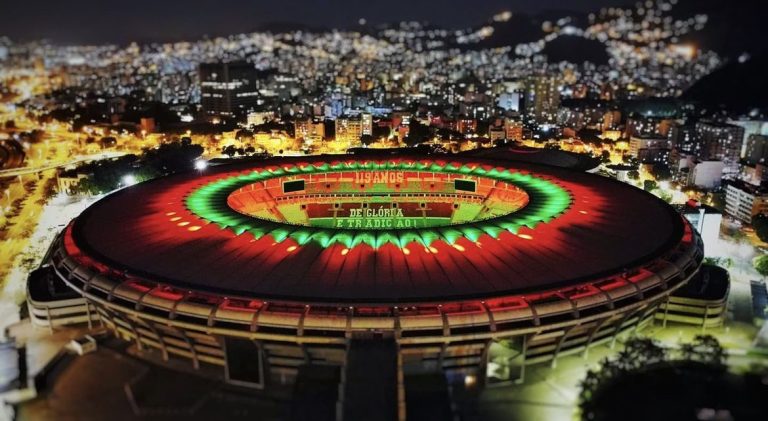Brazil will host the 2027 Women’s World Cup, leveraging stadiums from the 2014 Men’s World Cup. Last week, FIFA rated the country’s bid at 4.0 out of 5, higher than the joint European bid from Belgium, the Netherlands, and Germany, noting its strong commercial potential and cost efficiencies.
FIFA’s evaluation followed detailed inspections and informed the vote by FIFA Congress members in Bangkok on May 17th.
READ MORE
++ Brazilian stadiums: between history, anecdotes and neo-modernism
++ Which are the Brazilian clubs with the most Copa Libertadores titles?
Brazil’s bid to host the 2027 Women’s World Cup includes using an array of well-established stadiums across the country, many of which were venues for the 2014 Men’s World Cup. For more information about each stadium, read this detailed piece about the history and capacity of Brazil’s major stadiums.
Here are some details about the facilities planned to be used:
1. Estádio do Maracanã in Rio de Janeiro
One of the most iconic football stadiums globally, Maracanã has a seating capacity of 78,838. It is renowned for hosting significant events, including the finals of the 1950 and 2014 FIFA World Cups.
2. Estádio Nacional Mané Garrincha in Brasília
Known for its unique design and large capacity, the stadium can hold 69,432 spectators. It played a significant role in the 2014 World Cup and is expected to be a key venue in 2027.
3. Estádio do Castelão in Fortaleza
This stadium can accommodate 60,348 fans and is known for its modern facilities, having undergone renovation before the 2014 World Cup.
4. Arena Corinthians in São Paulo
With a capacity of 49,205, this stadium is home to Corinthians, one of Brazil’s biggest football clubs, and was a venue for the opening match of the 2014 World Cup.
5. Palmeiras Arena (Allianz Parque) in São Paulo
This is a more recent stadium with a seating capacity of 43,713. It’s a modern venue that hosts games for the Sociedade Esportiva Palmeiras.
6. Arena Pernambuco in Recife
Holding 44,300 spectators, this stadium is celebrated for its modernity and sustainability features.
7. Arena Fonte Nova in Salvador
With a capacity of 51,708, this stadium is known for its acoustic design and is a central hub for football in northeastern Brazil.
8. Arena Pantanal in Cuiabá
It can host 41,112 fans and is noted for its versatile design, suitable for various sporting and cultural events.
9. Arena da Amazônia in Manaus
This stadium can accommodate 40,549 spectators and is famous for its design inspired by the Amazon rainforest.
10. Mineirão in Belo Horizonte
A historic venue with a capacity of 61,927, it has hosted several international football matches.
These stadiums are part of Brazil’s comprehensive proposal to use existing sports infrastructure, aiming to reduce costs and environmental impacts, while providing world-class facilities for the tournament.
Remembering Zagallo
Sambafoot Series launched a new documentary about the football legend Zagallo. Known as ‘Velho Lobo‘ and as superstitious as it gets, Zagallo helped shape what Brazilian football is nowadays — as a player and as a coach.
Binge the first four episodes available on Sambafoot’s Youtube channel. Stay tuned for upcoming releases as we keep telling this legend’s life story.



